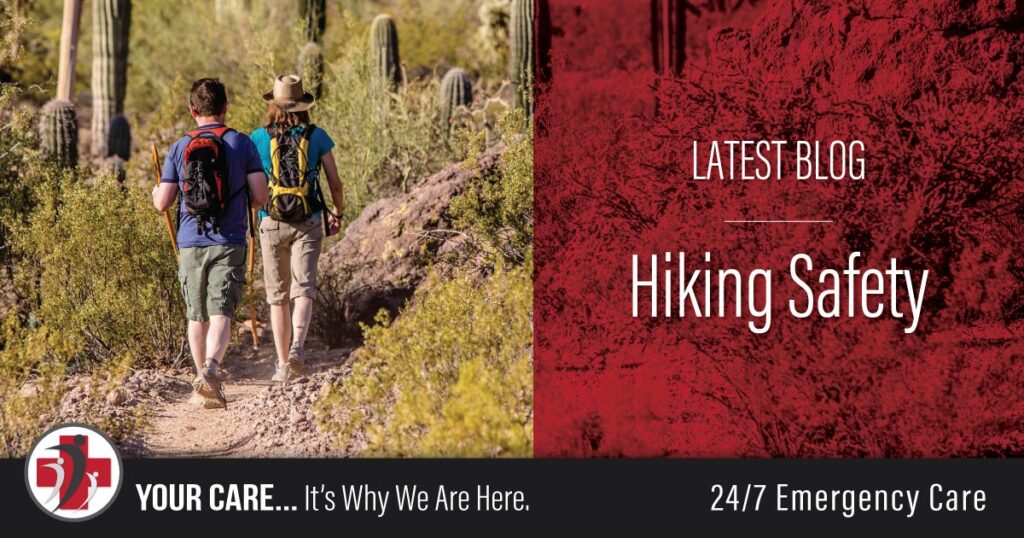Spring is upon us here at Fountain Hills, and this means more people are being active outside. We love to see our staff and patients taking advantage of the beautiful walking and hiking trails around our community; after all, exercising outdoors is a great way to help prevent a myriad of maladies. And after our article last month about the hiking-related injuries of sprains and strains, we wanted to follow up with a piece about overall safety while hiking.
If you’re a hiker, either novice or experienced, chances are you do give considerable thought to your safety while hiking. Chances are also good that you’ve spent a lot more time than you need to worrying about the least likely hiking fears such as snakes (although these are indeed a real threat in Arizona), mountain lions, and other wildlife; and a lot less time being concerned and prepared for the following threats that are more likely to occur.
- Lack of sanitation. You know the old adage about rubbing dirt on a wound? While there is, surprisingly, some wisdom to that (the presence of soil on a wound can help activate a protein that helps stem bleeding), the potential danger is much greater. Sustaining a cut or scrape on a hike is more likely to result in an infection if you don’t carry the necessary means to clean it. We recommend using antiseptic wipes, such as BZK- or alcohol-based wipes, and an antibacterial gel with a bandage. Don’t have any of that? Simply irrigating the wound with clean water will also help immensely.
- Lack of direction. Don’t depend on your phone or your own sense of direction to get you where you need to be. Phones can become useless for any number of reasons on a hike. And many things can affect your judgement or ability to remember the right way to go including inclement weather, fatigue, dehydration, and more. Stick a compass in your backpack (making sure you know how to use it first), and always let a friend or park ranger know what your hiking plans are.
One more tip regarding direction: stop and look behind you periodically during your hike – getting a mental snapshot of landmarks you’ll see from the vantage point of coming the other way can be very helpful. - Lack of water. In our desert climate, you should plan to bring a minimum of 1 liter (or 34 ounces) per hour you’ll be hiking, plus extra to account for being out longer than you anticipate. It never hurts to bring along a way to purify river water as well in case you’re hiking near water – some options include water purification tablets, portable filters, an ultraviolet purifier, or a portable pump filter. The alternative is far less pleasant, as dehydration can cause some serious side-effects such as nausea, cramping, disorientation, and headaches.
- Lack of knowledge. Study up on the hike you’re taking beforehand, so you’re not caught unaware by the grade/steepness, water presence, terrain, trail rules, whether you need to balance or climb at any point, and any other significant information.
If you do find yourself injured or sickened on a hike, we encourage you to take advantage of our primary care clinic, urgent care, or emergency room. All areas accept walk-ins, and all are fully staffed with top-grade medical experts. We can assist with plant-caused rashes, insect bites, dehydration, injuries, and much more. Enjoying the great outdoors can often come with a price. But being fully prepared will allow you to enjoy your Arizona hiking more, and for longer. Plus, you’ll be putting your loved ones, and your doctors’, minds at rest, knowing you’re taking care of yourself by being ready for whatever comes your way.
Sources:
- American Hiking Society
- www.med.ubc.ca
- www.bearfoottheory.com
- www.nps.gov

